I want to measure the current in a 5V circuit. The current is between 50uA and 2.5mA. The current is from a NTC and it changes slowly (10Hz measurement is fast enough).
Here is the typical application circuit from the MCP6N11 datasheet. My circuit is very similar.
I intend to use the Instrumentation Amplifier MCP6N11 (because it does the job and I can buy it locally) with the output connected to a 12 bit ADC MCP3204.
I plan two identical circuits (to measure similar sensors). For the same current the circuits should produce the same digital value in the ADC.
I am thinking how I can make sure to see identical values. Because even if I use 0.5% resistors they are likely different in each circuit. I could have i.e. a nominal 100 Ohm resistor which is one time 99.5 Ohm and the other one 100.5 Ohm.
I see the following options:
- Add a trim pot parallel to Rsense or Rf or Rg and adjust it so that the circuits match.
- Like 1 but with a fixed parallel resistor, i.e. 100 Ohm with a parallel 47k Ohm resistor
- Don't change the resistors. Adjust the digital output of the ADCs in the microprocessor (i.e. a * 1.013 = b)
What is the best approach to do this? Initially this has to work with a temperature of about 20 to 50 degrees Celsius. But in the future maybe it should work for automotive temperature range.
I don't really know how accurate I have to build this and how accurate I can build this with of the shelf parts. I try to make the accuracy better than 1% - if possible without a huge amount of work.
